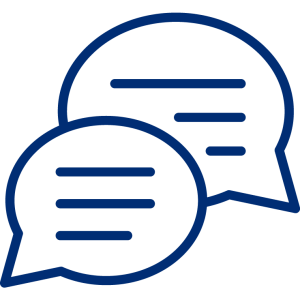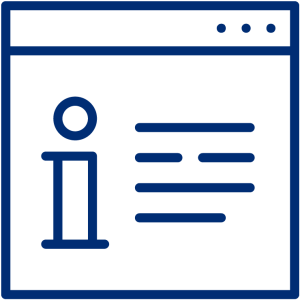The Homeschool Hub is your one-stop resource for current information on homeschooling data, regulations, and research across the United States. All fifty states — all in one place.
What It Is and Isn’t
In the United States, there is a lack of understanding about the number of students and families who homeschool and its impact on the country’s education system. Misconceptions are driven by a lack of access to the information needed for high-quality research.
The Johns Hopkins Institute for Education Policy’s Homeschool Hub, funded in part by EdChoice, bridges this gap and provides users with easy access to current homeschool information and downloadable data for all fifty states plus the District of Columbia. Our goal is to remove barriers to rigorous research, increase transparency, and expand awareness to encourage evidence-driven policy.
The Homeschool Hub is not an advocacy project. It is a reliable, evidence-based source for factual and unbiased information about homeschooling and related education models in the United States. Data come from federal and state sources and academic institutions. We link to primary sources for policy and data, and all information has been carefully reviewed by experienced academic researchers.

Find State Summaries
Why It’s Needed
Historically, federal homeschool participation estimates hovered around 2-3% of K-12 students. However, during the pandemic, homeschool participation exploded, with U.S. Census surveys reporting approximately 11% of families were homeschooling. The percentage of students homeschooled was likely higher, as families often have more than one child.
In comparison, today, only 1-2% of U.S. students use vouchers or public funds for private education, around 7% attend public charter schools, and approximately 9% attend private schools. Currently, homeschool student participation hovers between 5% and 6%.
However, despite the growth in participation, homeschooling receives relatively little attention compared to other education alternatives. The necessary data are spread across different state organizations and are difficult to find, slowing research.
Designed for a wide range of users and stakeholders – including researchers, policymakers, and journalists – the Homeschool Hub makes finding homeschool information quick and easy. As homeschooling grows, the Homeschool Hub will serve as the leader in promoting rigorous homeschool research and responding to the need for more transparency from this growing sector.
State Summaries: What You’ll Learn
In addition to state participation data, the state summaries explain the history, legalization, and regulation of homeschooling. The states are defined by the four U.S. Census Bureau regions of the country. Additionally, there is information on the compulsory age, access to public school offerings, services, and other supports that vary by state. A cross-sector comparison places homeschool participation in context with other sectors like charter and private schools. Finally, there is information about other education options families have in the state outside of homeschooling, which may impact participation.

11% of Families Homeschooled During the Pandemic
During the pandemic, homeschool participation exploded, with U.S. Census surveys reporting approximately 11% of families were homeschooling.
““As homeschooling continues to expand and evolve, we need a better understanding of this growing and diversifying education sector. We need policy based on facts, not historical stereotypes. My hope is that the Homeschool Hub will help fill these needs.”

11% of Families Homeschooled During the Pandemic
During the pandemic, homeschool participation exploded, with U.S. Census surveys reporting approximately 11% of families were homeschooling.
““As homeschooling continues to expand and evolve, we need a better understanding of this growing and diversifying education sector. We need policy based on facts, not historical stereotypes. My hope is that the Homeschool Hub will help fill these needs.”

What exactly is homeschooling?
As homeschooling has evolved over the years, its definition, practice, and how it is referenced by families and states have grown more complex. Further complicating efforts to define “homeschool,” states call the practice different names. Many states allow the same practice by multiple names: homeschool, nonpublic, and private. In some states, microschools are classified as private schools. In other states, they are homeschools. In general, homeschooling is defined as the parent-directed education of their children, and possibly the children of other families, in the home for the majority of the time. The Homeschool Hub uses the definitions that apply in each state.
Data and Limitations
The Homeschool Hub provides downloadable data to its users. You can easily download longitudinal state participation data for 39 states and disaggregated data with information on student age, grade, gender, and race.
In most cases, the data come directly from the states. In some cases, when states no longer report historical data, the Homeschool Hub provides data collected in earlier years. These data are counts, not estimates, but are only as accurate as state reporting. Not all people who homeschool report to the state, and it is unlikely that people who don’t homeschool would report that they were. Therefore, counts may be lower than actual participation.
Similarly, homeschool definitions vary by state, with some states providing multiple options. It is unclear if these homeschool counts accurately include everyone in microschools, umbrella private schools, and other education options where students are schooled from home but may not be legally classified and counted as homeschooling.
Citation
To cite data and information from the Homeschool Hub, please use:
Watson, Angela R. (2023). Homeschool Hub. The Johns Hopkins Institute for Education Policy Homeschool Hub. https://education.jhu.edu/edpolicy/policy-research-initiatives/homeschool-hub/.
Want to learn more about the Johns Hopkins Homeschool Hub?
Want to stay up-to-date on homeschooling news, data, events, and more?

